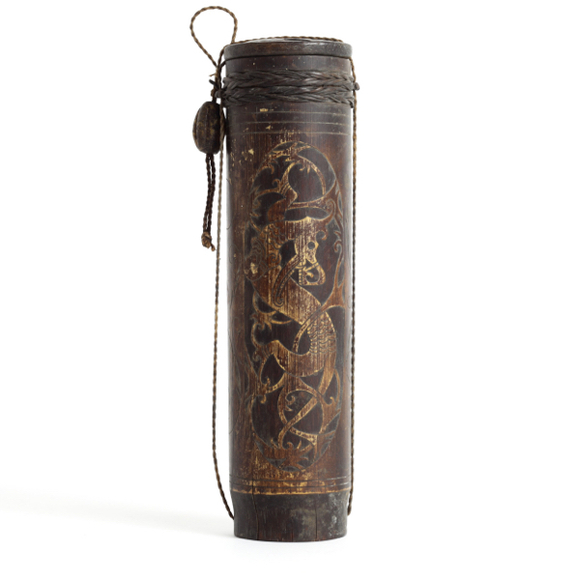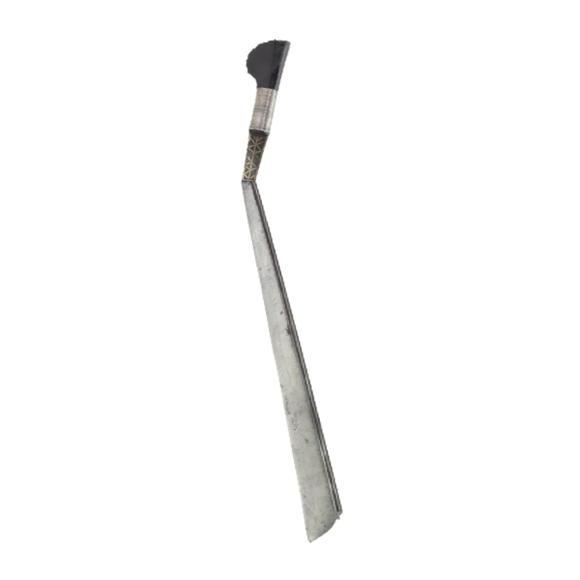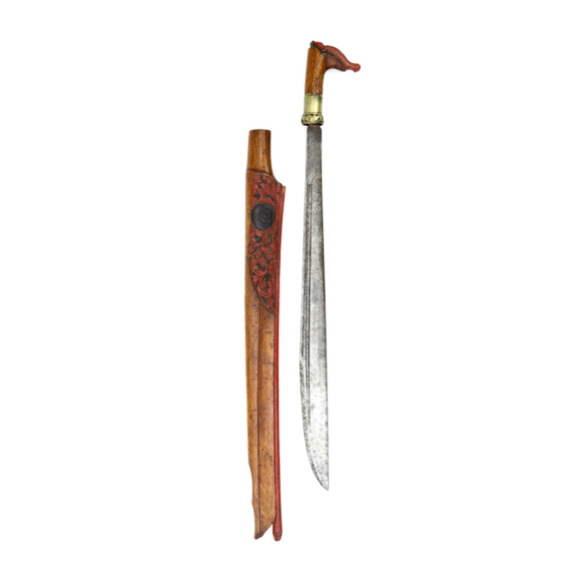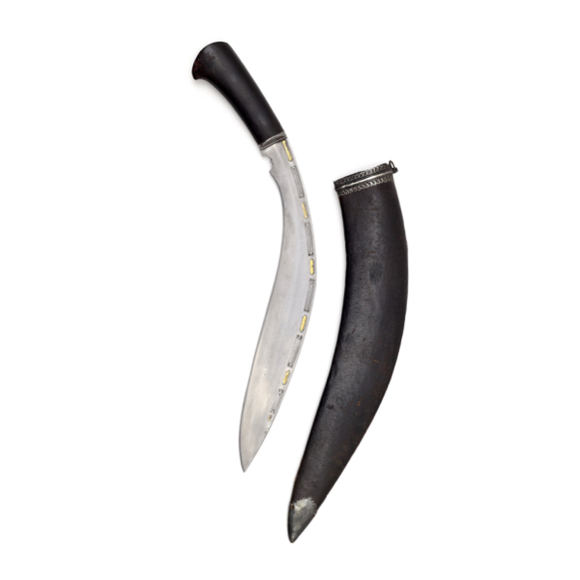Carved with typically Dayak aso "dog dragon" motifs.

95 cm
78 cm
Base 9 mm
Middle 5 mm
Tip 2.5 mm
Base 32.5 mm
Middle 30 mm
Tip 27 mm
grams
19.7 cm from guard
Iron, steel, brass, wood, rattan.
The Marat of Sabah and Sarawak
(Northern Borneo)
Maurice Bloebaum collection
(A notable Borneo collector.)
Mr. Ben Medze
(Former chairman of the Dutch keris study group.)
Aalderink Oriental Art
Introduction
The parapat is a large saber used by the Murut people of the northern part of Borneo.
"The last indigenous group of Sabah to renounce headhunting, the Murut were known as the silent headhunters and called “pengait”, or the hook. Up until the 1960s, they beheaded their foes and collected the heads as trophies."
-The Malaysian Insight, 2020
Their sword is characterized by a long, narrow blade of even width from base to tip, ending in a downward sloped point.1
It is mostly known in the Western collecting works as pakayun, which literally means "what I wear". This is in following of a paper from 1901 using this as the name. 2
Notes to introduction
1. Albert G. van Zonneveld; Traditionele wapens van Borneo, de uitrusting van de koppensnellers. Deel III, zwaarden en messen. Sunfield Publishing, 2021. Page 169.
2. R. Shelford; A provisional classification of the swords of the Sarawak tribes. Journal of the Anthropological Institute of Great Britain and Ireland, Vol. 31. January-June 1901. Presented 12th November 1901.
This example
A typical example, with a large curved blade of mostly even width and the characteristic sloped point. The blade flats have two narrow groove on the dorsal side, one running into the tip and one terminating a little earlier. The blade is forge folded with a straight wood grain prominently visible on both sides.
The hilt comprises of a brass sleeve with an integrated guard, the guard is lobed and seems inspired by some seen on swords of mainland Southeast Asia.

Our parapat compared to a Thai dàap (ดาบ).
From the sleeve merges a forked wooden pommel piece, partially wrapped with rattan. Pieces missing. The ends of the fork are finely carved with flower buds, unusual for this type, and in between them is a leaf. The hilt has a beautiful original patina throughout.
The sword comes with a custom stand to display it upright among your other treasures:













Of typical South Borneo workmanship, but formed like a mandau from Kutai.
With a very fine Nepalese blade, but kard-like hilt and scabbard.






